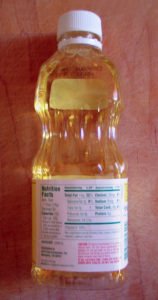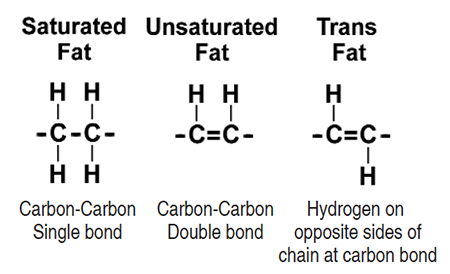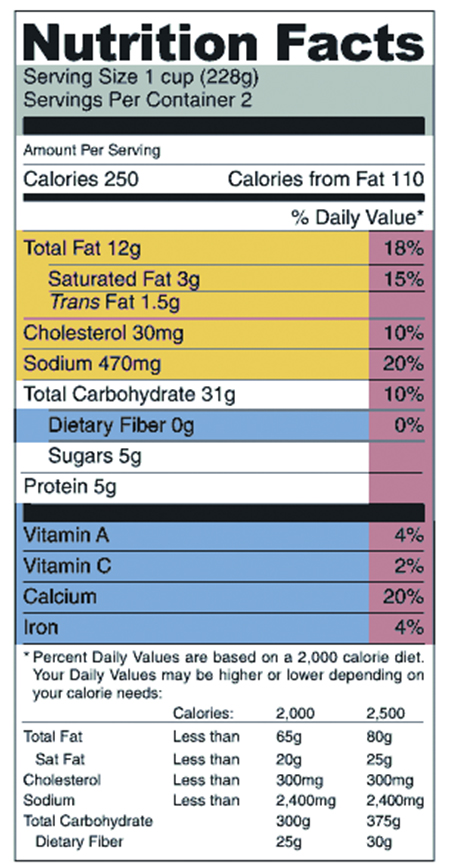Seafood processors should consider frying products in stable vegetable oils relatively high in oleic acid

For many years, consumers have been encouraged by both print and broadcast media to limit the saturated fats in their diets and consume foods that contain more unsaturated lipids. As a result of the publicity, the public began a dietary shift away from foods with high amounts of lipids. The best example was the substitution of margarine for butter.
Recent scientific evidence shows that consumption of saturated fat (Fig. 1), trans fat, and dietary cholesterol raises low-density lipoprotein (LDL) or “bad” cholesterol levels and increases the risk of coronary heart disease. According to the National Heart, Lung, and Blood Institute of the U.S. National Institutes of Health, more than 12.3 million Americans have coronary heart disease, and more than 500,000 die from it each year.
Dietary cholesterol can contribute to heart disease even without raising LDL. However, unlike saturated fat, trans fat lowers the high-density lipo-protein or “good” cholesterol in the blood. In addition, the Department of Nutrition at the Harvard School of Public Health says, some short-term studies show that trans fats increase triglyceride conditions associated with insulin resistance, the underlying mechanism for type-2 diabetes. Because essential fatty acids reduce the risk of type-2 diabetes, partial hydrogenation (transforming a polyunsaturated to a saturated fat) increases the risk by destroying essential polyunsaturated fat-ty acids.
Lipid chemistry

There are three main types of fatty acids: saturated, monounsaturated, and polyunsaturated. Saturated fatty acid has the maximum possible number of hydrogen atoms attached to every carbon atom. A fatty acid with one double bond is called monounsaturated, while fatty acids with more than one double bond are called polyunsaturated.
The fat in food contains a mixture of saturated, monounsaturated, and polyunsaturated fatty acids. In food of animal origin, a large portion of these fatty acids are saturated. In contrast, a large portion of the fatty acids in food of plant origin and some seafood are monounsaturated and polyunsaturated.
Regulating trans-fatty acids
On November 19, 1999, the U.S. Food and Drug Administration (FDA) published a proposed rule that would allow the declaration of trans-fatty acids on nutrition labels and limit trans-fatty acids wherever saturated fat limits are placed on nutrient content or health claims (Fig. 2). Specifically, FDA proposed that the amount of trans fat be included with that of saturated fat. The combined amount would be followed by an asterisk referring to a footnote that specifies the amount of trans fat included in the total value.

FDA’s regulatory chemical definition for trans-fatty acids is all unsaturated fatty acids that contain one or more isolated (i.e., nonconjugated) double bonds in a trans configuration. Under the agency’s definition, conjugated linoleic acid would be excluded from the definition of trans fat. In addition, FDA proposed that the “daily value” shown be based on the combined amount of saturated and trans-fatty acids.
However, trans fat does not have to be listed in the total fat if it is less than 0.5 grams per serving and no claims are made about fat, fatty acids, or cholesterol content. If it is not listed, a footnote will be added stating that the food is “not a significant source of trans fat.” Food manufacturers have until January 1, 2006 to list trans fat content for all of their products, although some food products already list it on their labels.
Processed seafood
Since much seafood is sold fresh and not processed, the aquaculture industry will not be affected by the new FDA ruling on trans fat labeling. However, further processors that utilize ingredients high in trans fats, such as prefried batters or breading products that contain high amounts of margarine or shortening, may be required to develop new labels.
Since many fish and shellfish foods are fried, an alternative to using partially hydrogenated oils containing trans fatty acids would be to fry in stable vegetable oils relatively high in oleic acid, a monounsaturated fatty acid derived through traditional plant breeding or biotechnological methods. High- and midrange oleic sunflower oil, high-oleic safflower oil, and high-oleic soybean oil have increased oxidative stability for frying, compared to their native unhydrogenated counterparts, which are high in linoleic acid.
The following websites provide much useful information on FDA label requirements and the trans-fatty acid labeling:
Food Labeling:
http://www.cfsan.fda.gov/label.html
Federal Register Final Rule: Trans-Fatty Acids in Nutrition Labeling, Nutrient Content Claims, and Health Claims:
www.cfsan.fda.gov/~lrd/fr03711a.html
Questions and Answers on the Trans Fat Final Rule:
www.cfsan.fda.gov/~dms/qatrans2.html.N
(Editor’s Note: This article was originally published in the December 2003 print edition of the Global Aquaculture Advocate.)
Now that you've finished reading the article ...
… we hope you’ll consider supporting our mission to document the evolution of the global aquaculture industry and share our vast network of contributors’ expansive knowledge every week.
By becoming a Global Seafood Alliance member, you’re ensuring that all of the pre-competitive work we do through member benefits, resources and events can continue. Individual membership costs just $50 a year. GSA individual and corporate members receive complimentary access to a series of GOAL virtual events beginning in April. Join now.
Not a GSA member? Join us.
Author
-

George J. Flick, Jr., Ph.D.
Food Science and Technology Department
Virginia Tech/Virginia Sea Grant (0418)
Blacksburg, Virginia 24061 USA[117,100,101,46,116,118,64,103,107,99,105,108,102]
Tagged With
Related Posts

Health & Welfare
Dietary effects of fish oil, soy lecithin on shrimp in clear and greenwater systems
A 56-day trial conducted in greenhouse-enclosed clearwater and greenwater systems compared tissue variations among shrimp fed varied dietary levels of fish oil and soy lecithin.

Aquafeeds
Gamma irradiation enhances nutritional value of animal byproducts
Gamma irradiation treatment presents a possible processing technique for reducing anti-nutrients and improving the nutritive quality of many feed ingredients.

Aquafeeds
Plant lipid, protein use in cod, salmonid diets
Since camelina and flaxseed oils contain more omega-3 polyunsaturated fatty acids (PUFAs) than most plant oils, the authors investigated them as replacements for fish oil in diets for cod, salmon and trout.

Intelligence
Chlorine dioxide offers seafood treatment alternative to aqueous chlorine
Chlorine dioxide effectively reduces microorganisms on seafood and could be used as a processing treatment to improve shelf life and product safety.

